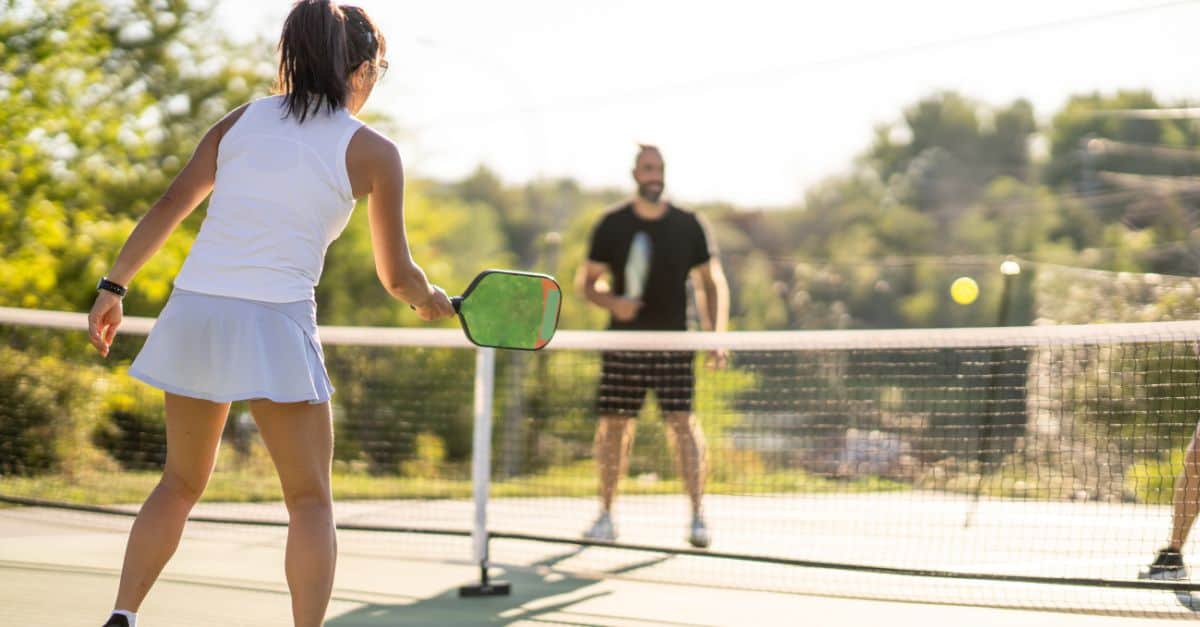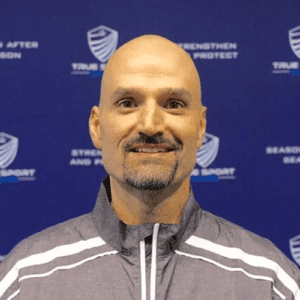By Marc Taczanowski, DC, DACBSP, CSCS, EMT-B
Did I really just write that? Isn’t this supposed to be a social sport for septuagenarians? What’s next? Canasta elbow? Mahjong neck? I’d love to be the first recorded case of something… Bingo-osis? Anyway, of course I jest. Pickleball is sweeping the nation and it is reviving many competitive juices even if some of the older athletes have little juice left and resemble dried fruits (nice visual, right?)
Much like other racquet/paddle sports, pickleball has its fair share of injuries and/or complaints. In this article we will look at the top three, how they can be treated, and, most importantly, how they can be prevented. Sit back, turn up some Englebert Humperdink (real name Arnold Dorsey – nice move Arnold), pour yourself a sidecar or rusty nail and let’s delve into this soon-to-be multi generational sport.
Pickleball Injury Statistics
First some stats. According to one study, there were over 19,000 pickleball related sports injuries that required health assistance in 2019. The same study estimated that 90% of the patients treated for pickleball injuries were over 50, with the split relatively even between male and female pickleball players. The most common injuries reported in the study were strains, sprains (28.7%), and fractures (27.7%).
How to Prevent Fractures In Pickleball Players
How does one prevent fractures? Don’t fall down. The ONLY advice that can help with preventing fractures (and in this case the fractures would come from falls) would be to work on BALANCE. As we age there is a strong correlation with diminishing balance. The good news is it is easily trainable. We have many sensors in and around our body. Eyes are the most obvious. We also have these fluid filled semicircular canals in the ears which are like levels and tell us if we are off-kilter or not. Lastly but most importantly are little pressure and stretch sensors in our muscles, ligaments, bones and joints that also detect our positions in space. These are called proprioceptors.
1. Test your Balance
You can test your balance by standing on one foot and see how long you can stay there without falling over. Now try the same thing with your eyes closed. You’ll see that it’s much more difficult because you’ve taken away your visual input. Know when a lot of people fall and break stuff? When they get up in the middle of the night to pee. Less visual input.
2. Train your Balance
Balancing on one leg with your eyes closed is a great way to train your balance, but only if you have a “touch-point” as a safety net close by. Hands hovering over the kitchen counter is a great example. If you start to tip, your hands will cue you to the danger.
Sprains and Strains in Pickleball Players
We will focus more on sprains and strains since they are the sneaky little buggers that often appear with little to no warning and seemingly out of nowhere. The top three complaints in pickleball are shoulder pain, elbow pain and achilles issues. Here we go….
How to Prevent Shoulder Pain
From our last blog article, Dr. Hope was mentioning shoulder stability in the softball pitching arm. Even though the movement is different, shoulder stability is a common theme that runs parallel in many sports. Top three muscles that I would focus on to prevent shoulder issues would be: Lat, pec, and rhomboid. I’ll give a strong nod to the rotator cuff muscles as well as they allow for the prime movers to do their job but as far as the big muscles are concerned, the three listed are my go-to’s.
Exercises For The lat, pec, and rhomboid
How to Prevent Elbow Pain
Elbow pain can either be on the outside or inside of the elbow. These are called tennis elbow and golfer’s elbow respectively. I wonder if at some point tennis elbow will be changed to pickleballer’s elbow?
Anatomically there are more than a dozen muscles that attach to or cross over the elbow. You know what that means? It means that your tennis or golfer’s elbow can come from many different sources or combinations of sources. My top three muscles to interrogate with elbow issues are: Tricep, bicep, and pronator. FYI, if these muscles test strong we would have to look up, down and beyond to find the offending structure. These are just the first three I’d test.
Exercises for the tricep, bicep, and pronator
How to Prevent Achilles Issues
Finally there’s the dastardly achilles. There’s a legit term called “tennis leg,” and the mechanism also exists in pickleball but to a lesser degree. It’s from starting and stopping with moving forward and back. Tennis has a larger court, therefore higher amplitude and typically higher frequency of these movements. Imagine going for a ball and feeling like you were just shot in the leg. You look around and there’s no one in your immediate vicinity. You think to yourself, “man this is a rough neighborhood,” but in actuality you just experienced a tear in your calf muscle, aka tennis leg. My top three muscles to work on to prevent an achilles issue would be: soleus, hamstring, and glute max.
Exercises for the Soleus, Hamstring, and Glute Max
To put it succinctly, preventing injuries is good. Getting injuries is bad. Older athletes get injured more. We’re ALL getting older. We’re going to get injured. Remember, father time is undefeated!!!
Reference:
- Pickleball-Related Injuries Treated in Emergency Departments. B. Forrester, M. (2019.) National Library of Medicine











